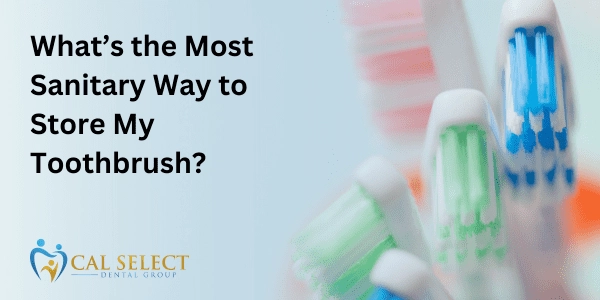
Your toothbrush is your right-hand partner in keeping your teeth, gums, and mouth healthy and clean (even if you’re left-handed). Brushing keeps plaque and tartar away and, along with flossing, can prevent gingivitis. But your toothbrush needs to be cared for to function at its best.
Here's a quick guide to storing, cleaning, and replacing this trusty tool.
It’s In the Air
Most people store their toothbrush very close to the toilet – what a way to treat your best friend! When a toilet is flushed, microscopic water droplets travel through the air with ease. This phenomenon is known as aerosol plume. Droplets containing human waste travel up to five feet with ease. Viral pathogens smaller than human waste travel those same distances, even with the lid closed.
If your toothbrush is stored on the counter, it’s exposed to both your aerosol plume and the plumes of other household members or guests. To minimize exposure, ditch the countertop holder.
Follow These Steps for Sanitary Storage:
- After each use, thoroughly rinse your toothbrush with clean, hot tap water to remove toothpaste and food debris.
- Let your brush air dry completely, preventing bacterial growth in a moist environment.
- Store your toothbrush upright in a closed cabinet, which protects the brush from droplets.
No extra steps are required to prepare your toothbrush between uses, but some people take additional steps to battle bacteria hiding between the bristles.
Additional sanitation techniques:
- Soak the brush head in antibacterial mouthwash for two minutes after brushing.
- Bring water to a boil, then remove from heat. Hold the brush head in water for 30 seconds.
- Prepare a fresh solution of denture cleanser and hold the brush head in the solution for 90 seconds.
- Use Ultraviolet light sanitizers after brushing.
Replace it Regularly
Toothbrush bristles become frayed and worn over time, reducing their effectiveness in removing plaque. Here's when it's time to say goodbye to your old friend:
The Three-Month Mark: As a general rule, replace your toothbrush every three months, or sooner if the bristles become frayed or damaged.
After an Illness: If you have been sick, it's best to replace your toothbrush to avoid reinfection.
Bonus Tip: Sharing is Not Caring
Toothbrushes are personal hygiene tools. Sharing a brush is a fast track to transferring bacteria and increasing the risk of spreading illness. Everyone in your family should have their own toothbrush.
By following these simple practices, you'll ensure your toothbrush remains a powerful ally in maintaining optimal oral health. If you need more help maintaining a clean and confident smile, reach out to the pros at Cal Select.
